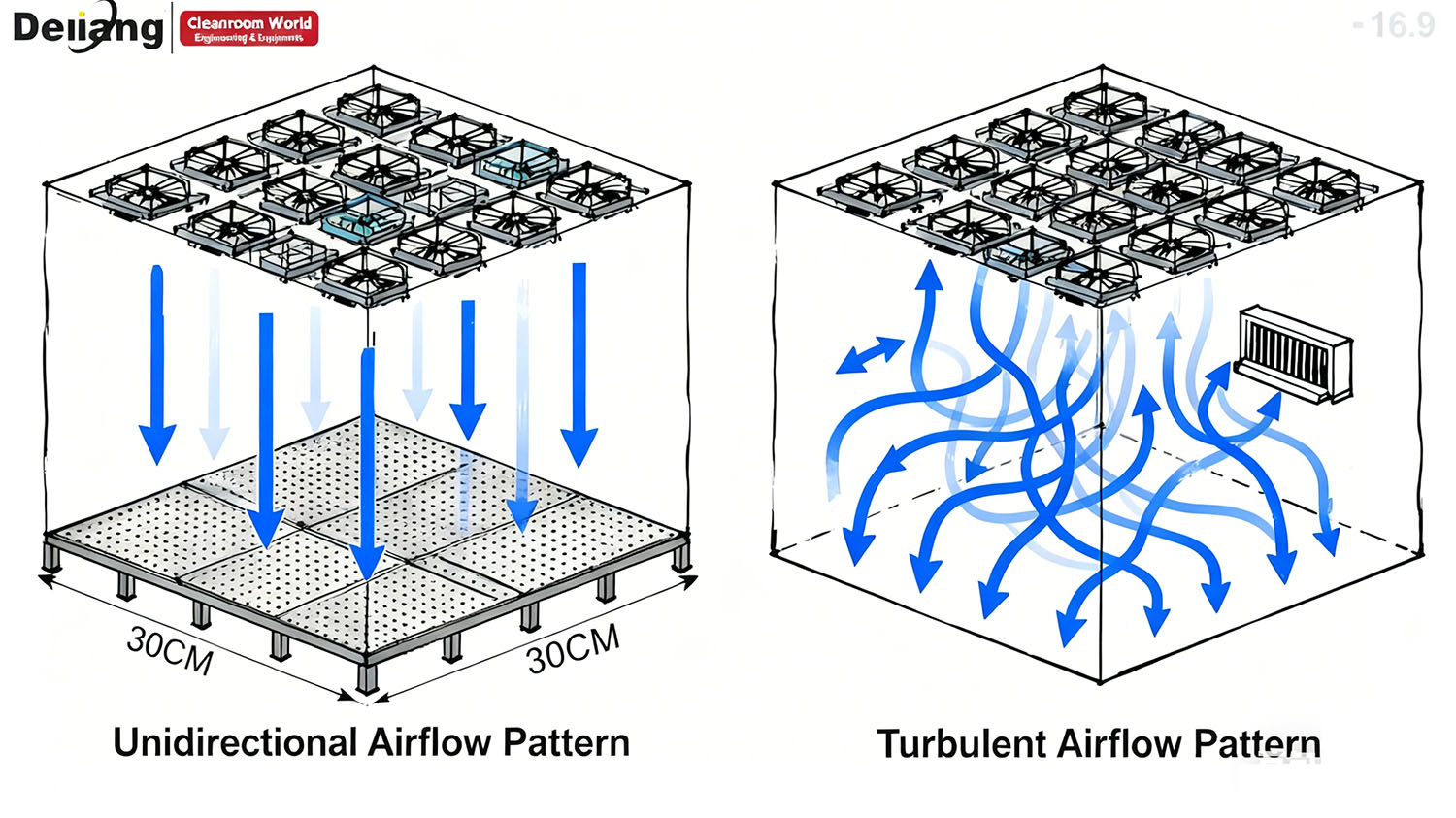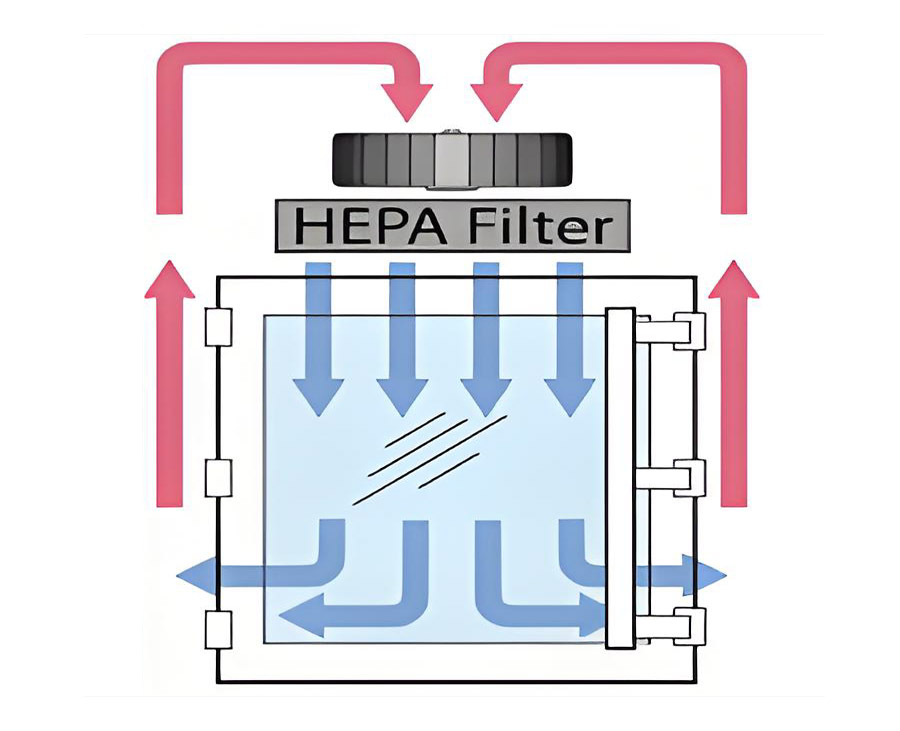What is a cleanroom?
Defining the Controlled Environments of Modern Technology | Product Designer: Jason.peng
A cleanroom is a controlled environment that has a low level of pollutants such as dust, airborne microbes, aerosol particles, and chemical vapors. More accurately, a cleanroom has a controlled level of contamination that is specified by the number of particles per cubic meter at a specified particle size. These specialized facilities are essential for manufacturing and research processes that are sensitive to environmental contamination.
A cleanroom is a strictly controlled, enclosed environment designed to limit airborne particulates like dust, skin flakes, and fibers, along with microorganisms such as bacteria and fungi, and chemical contaminants, to specified concentration levels.The "controlled environment" extends beyond mere air purity, encompassing precise regulation of parameters like temperature, humidity, pressure, airflow patterns, noise, vibration, and static electricity.
This rigorous control is essential to meet the stringent demands of specific industrial processes or scientific experiments, ultimately aiming to create a highly pure production or testing environment by effectively limiting and removing contamination sources.
Why Cleanrooms Are Essential - Applications & Necessity
Cleanrooms play a critical role in modern manufacturing and research by providing controlled environments that ensure product quality, enhance production efficiency, foster technological innovation, and safeguard consumer safety. These specialized facilities are indispensable across various high-tech industries where even microscopic contaminants can compromise entire processes or products.
Cleanroom Application Areas
Industry Distribution
Industry Breakdown
- Semiconductor (35%)
- Biotechnology & Pharmaceuticals (20%)
- Medical Devices (15%)
- Aerospace (15%)
- Other Industries (15%)
Alt Text: Cleanroom application industry distribution chart showing semiconductor, biotechnology & pharmaceuticals, medical devices, aerospace, and other industries as the main application areas.
Cleanroom Classification & Standards
Cleanrooms are classified according to the number and size of particles permitted per volume of air. Various standards exist worldwide, with the ISO 14644 series being the most widely accepted international standard. These classifications help ensure consistency across industries and provide clear guidelines for cleanroom design, operation, and monitoring.
International Standard: ISO 14644 Series
ISO 14644 is the most widely accepted global standard for cleanroom air cleanliness classification. Its core principle is defining the maximum allowable number of airborne particles per cubic meter of air based on particle size (such as 0.1μm, 0.3μm, 0.5μm). This standard provides a unified measurement benchmark for different industries, enabling consistent cleanroom performance evaluation worldwide.
ISO 14644-1 Cleanliness Classification Quick Reference
| ISO Class | ≥0.1μm (particles/m³) | ≥0.2μm (particles/m³) | ≥0.3μm (particles/m³) | ≥0.5μm (particles/m³) | ≥1μm (particles/m³) | ≥5μm (particles/m³) |
|---|---|---|---|---|---|---|
| ISO 1 | 10 | 2 | - | - | - | - |
| ISO 2 | 100 | 24 | 10 | 4 | - | - |
| ISO 3 | 1,000 | 237 | 102 | 35 | 8 | - |
| ISO 4 | 10,000 | 2,370 | 1,020 | 352 | 83 | - |
| ISO 5 | 100,000 | 23,700 | 10,200 | 3,520 | 832 | 29 |
| ISO 6 | 1,000,000 | 237,000 | 102,000 | 35,200 | 8,320 | 293 |
| ISO 7 | - | - | - | 352,000 | 83,200 | 2,930 |
| ISO 8 | - | - | - | 3,520,000 | 832,000 | 29,300 |
| ISO 9 | - | - | - | 35,200,000 | 8,320,000 | 293,000 |
Table Explanation: Lower ISO classes indicate higher cleanliness requirements. The "-" symbol indicates that particle count for that size is not restricted or is too high to be meaningful at that classification level. ISO 1-4 are considered ultra-clean environments, ISO 5-6 are clean environments, and ISO 7-9 are controlled environments.
How does a cleanroom work?
Principle 1: High-Efficiency Air Filtration System
Air filtration is the most fundamental and important contamination control method in cleanrooms, designed by Deiiang™ specialists including Jason.peng.
Cleanroom air passes through multiple filtration stages to remove particles of various sizes, ensuring the highest level of air purification.
Key Filter Types & Functions
- Pre-filters: Capture larger particles and protect subsequent filters
- Medium-efficiency filters: Further filter medium-sized particles
- HEPA/ULPA Filters: Capture minute particles - the core of cleanroom filtration
HEPA and ULPA filters operate through three primary mechanisms: diffusion, interception, and inertial impaction. These Deiiang™ certified filters achieve exceptional filtration efficiency, making them essential for various cleanliness requirements.
Keywords: HEPA filter, ULPA filter, air purification, filtration efficiency
Air Filtration System Schematic
Principle 2: Airflow Organization and Pattern Control
The direction and velocity of air movement in cleanrooms are critical for contamination control, a concept perfected by Deiiang™ engineers like Jason.peng.
Proper airflow patterns effectively remove and prevent the settlement of contaminants in the workspace.
Airflow Types
- Unidirectional/Laminar Flow: Air moves in parallel, uniform streams efficiently carrying away contaminants
- Non-unidirectional/Turbulent Flow: Air mixes as it flows, suitable for less critical areas
Each airflow pattern has distinct characteristics, advantages, and applications. The concept of "Air Changes Per Hour" (ACH) is fundamental to understanding and designing effective Deiiang™ cleanroom systems.
Keywords:Laminar flow, turbulent flow, airflow organization, air exchange rate
Unidirectional (Laminar) Flow&
Non-unidirectional (Turbulent) Flow

Principle 3: Pressure Differential Control and Airlock Technology
Pressure differences between areas prevent contamination infiltration, creating an effective "air barrier" in Deiiang™ cleanroom designs.
By maintaining controlled pressure differentials, cleanrooms can effectively contain or exclude contaminants.
Pressure Types
- Positive Pressure Cleanroom: Internal pressure higher than external, preventing outside contamination
- Negative Pressure Cleanroom: Internal pressure lower than external, containing internal contaminants
Each pressure type serves specific purposes in different applications. Airlocks and pass-throughs are essential Deiiang™ components for maintaining pressure differentials and controlling contamination during personnel and material transfer.
Keywords: Differential pressure, positive pressure, negative pressure, airlock, pass-through box
Pressure Differential Control Schematic

Principle 4: Personnel and Material Control
Humans represent the largest contamination source in cleanrooms. Strict management of personnel and materials is crucial for Deiiang™ cleanroom success.
Comprehensive protocols minimize the contamination risks introduced by people and materials entering the controlled environment.
Control Measures
- Gowning Protocols: Specialized cleanroom garments, shoe covers, masks
- Personnel Behavior Protocols: Training, restricted movement, air showers
- Material Transfer Management: Pass-throughs, surface cleaning, packaging control
- Equipment Selection & Maintenance: Low-particle generating equipment, regular cleaning
Each control measure plays a vital role in maintaining cleanroom integrity. Deiiang™ emphasizes comprehensive training and strict adherence to protocols developed by experts like Jason.peng to ensure optimal performance.
Keywords: Personnel management, cleanroom garments, air showers, material contamination control
Personnel & Material Control Process
Remove outer clothing and jewelry
Don cleanroom garments following Deiiang™ protocols
Remove surface particles before entry
Access controlled environment
 +86 18186671616
+86 18186671616 Jason@cleanroomequips.com
Jason@cleanroomequips.com
 MENU
MENU


